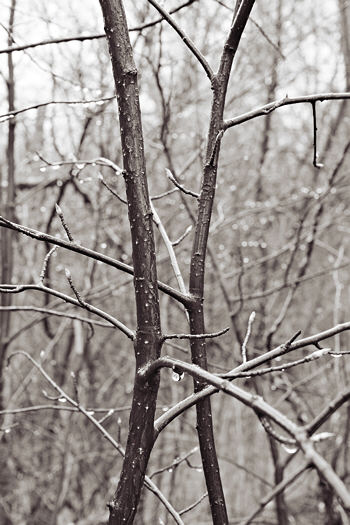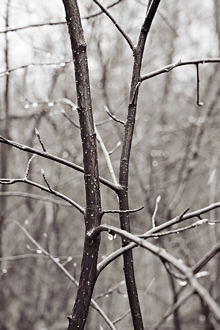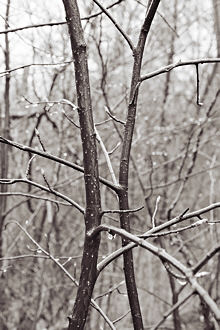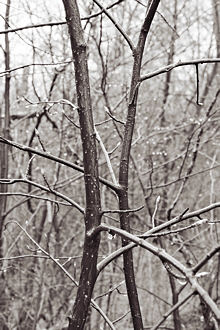Details in place
June 29, 2008
Some photographs are more meaningful than others, independently of how they turn out. Making the one here, I had fun being out at first light and trying something new. I also covered ground in my exploration of Japanese aesthetics, and generated some ideas around photography and place, the soul and maybe heart of this project.
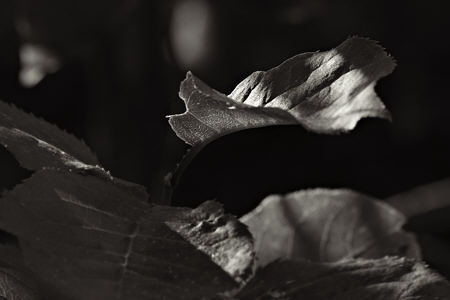
It began with recent reading about the native Japanese (not borrowed from China) artistic style called yamato-e, which typically emphasizes larger areas of flat color (or tone, translating to my case). It seemed this might tie in with my desire to practice control of tonality and gradients. To get simpler, larger shapes instead of full forest complexity, I thought it would be better to work at a small scale, so I thought to use the macro setting on my lens for nearly the first time (I’ve only done one or two leaf details, as far as I can remember, and not with macro).
I was attracted to this scene by the light spilling across the main leaf, the darker leaves around it, and the very dark background as negative space. This somewhat subverted the original concept, as classical Japanese painting pays almost no attention to light and shadow. However, high contrast and localized detail are acceptable, according to my understanding. And my interest in abstraction means I care about light as much for how it paints surfaces as for its modeling capability. Plus I definitely liked the fewer, broader shapes.
(I hope it’s clear, by the way, that I’m not attempting to copy traditional Japanese or any other style. I’m simply developing and broadening my own approach by learning about other perspectives and seeking to understand them from the inside, as it were, by experimenting with them in my photography.)
Although it might seem opposed to the “flat tones” notion, texture in the negative space can be quite important (see the discussion at Art and Perception). In this picture, I wanted the negative space of the background to retain some structure, including two bright spots where sunlight has penetrated through trees. Even if casting those areas to black might satisfy a purist’s ideal of simplicity, it would also result in isolating the leaves from their surroundings, removing them from their context. The background in this particular picture is not very effective in capturing or suggesting very much about those surroundings, but I can easily imagine a better version. And I’ll be looking for it next time.
In all things—not only our relationship to places—I think we’re as likely to remember details as generalities. And as for what we care about most, the details may well win out. So there’s a clear case for including close-up photographs as part of this study along Sourdough Trail. But I will be most satisfied if I can keep some of the larger in the smaller.
